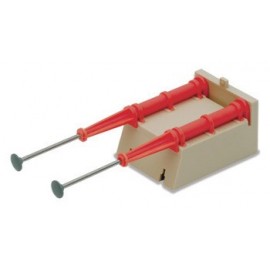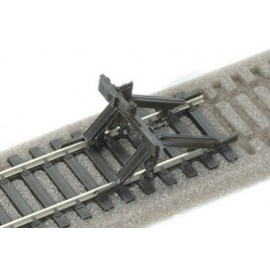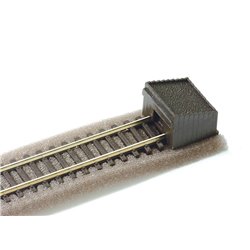There are a number of different options for attaching figures such as a horse and rider to a layout. Perhaps the...
No products
Product successfully added to your shopping cart
There are 0 items in your cart. There is 1 item in your cart.
Search Tips
What is the purpose of buffer stops?
Buffer stops, also known as buffer stops or buffers in railway terminology, are a critical safety feature in rail transport. They are installed at the end of rail tracks to prevent trains from running off the end of the line. Their primary purpose is to absorb the kinetic energy of a moving train, thereby preventing damage to infrastructure, rolling stock, and most importantly, ensuring the safety of passengers and railway workers. In the UK, buffer stops are commonly seen at terminal stations, sidings, and other locations where a railway line comes to an end.
One of the key functions of buffer stops is to provide a physical barrier at the end of a track. This is crucial for preventing overruns, especially in busy urban stations where trains frequently come into close proximity with platforms, buildings, and other structures. By stopping a train that has not come to a halt in time, buffer stops help to avert potential collisions with infrastructure or the derailment of the train. In the event of mechanical failure or human error, the buffer stop acts as a last line of defence, reducing the risk of a serious accident.
Buffer stops come in various designs and materials, each tailored to specific operational requirements and conditions. Traditional buffer stops were often made of heavy metal or wood beams, positioned to absorb impact force directly. Modern designs, however, incorporate advanced engineering principles and materials to enhance their energy-absorbing capabilities. Hydraulic buffer stops, for example, use fluid dynamics to dissipate energy gradually, allowing for a smoother deceleration of a train. Friction buffer stops employ sliding mechanisms to convert kinetic energy into heat, further mitigating impact forces. The choice of design depends on factors such as train speeds, train weights, and the space available at the track end.
In the context of the UK railway system, the installation of buffer stops is governed by stringent safety standards and regulations. Organisations such as the Office of Rail and Road (ORR) and Network Rail set the guidelines for their design, placement, and maintenance. Regular inspections ensure that buffer stops are in optimal condition and capable of performing their intended function. This regulatory framework is essential for maintaining high safety standards across the rail network, especially in busy metropolitan areas like London, where railways are integral to daily commuting.
Buffer stops also play a psychological role for train drivers. The presence of a buffer stop acts as a visual cue, signalling the end of the track and prompting drivers to initiate braking procedures well in advance. This is particularly important in terminal stations, where multiple trains arrive and depart in quick succession. The buffer stop thus serves as a reminder to drivers of the importance of speed control and situational awareness, reducing the likelihood of human error leading to accidents.
In addition to their safety functions, buffer stops can also contribute to the aesthetic aspect of railway stations. Many modern stations have incorporated visually appealing buffer stops that blend with the architectural design of the station. This is particularly evident in some of the UK’s historic railway stations, where ornate and decorative buffer stops complement the station’s heritage and appeal. In such cases, buffer stops not only serve their practical purpose but also enhance the visual experience for passengers and visitors.
Overall, buffer stops are an indispensable part of the railway infrastructure in the UK. They are a testament to the engineering ingenuity and safety-first approach that underpin the country’s rail network. By effectively preventing overruns and minimising the risk of accidents, buffer stops play a vital role in ensuring that rail travel remains one of the safest and most reliable modes of transportation available today. Their continued development and improvement reflect the ongoing commitment to passenger safety and efficient rail operations in the UK.
Click here to receive the tips weekly in your mailbox. You can unsubscribe at any time.










